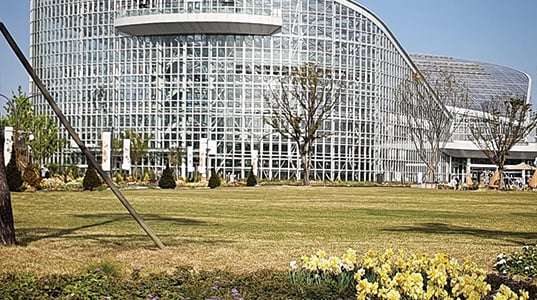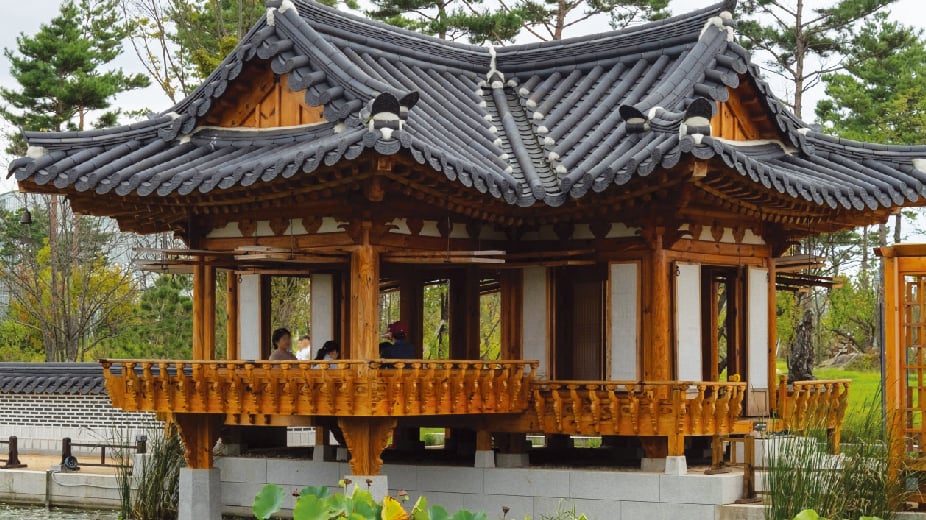
-
“Daejeon” means “a large field.” Originally a quiet rural town, its location on the Gyeongbu Line elevated it to a large city. The city is divided into the old and new towns. The former, near Daejeon Station, features well-known restaurants and cutesy shops clustered near Euneungjeongi Culture Street. Another popular hangout is Soje-dong, whose retro-style cafés are becoming ever more popular. Daejeon’s new town is formed around the Daedeok area’s institutes of higher learning and research. Because it is a planned city, it has a spacious and green ambience. Despite being one of the largest cities in Korea, Daejeon also has spaces filled with things other than high-rise buildings. Gyeryongsan National Park is located near the city, so you can go for a hike in the mountains as a day trip, while Daecheongho Lake’s famously clear water can be found only a short jaunt away.
-
The city of Sejong, or Sejong Special Self-Governing City, was separated from Chungcheongnam-do Province in 2012 to serve as the administrative capital of Korea. It is divided into the former Jochiwon area, the Government Complex Sejong, and the residential areas near the new town. Sejong is surrounded by fertile farmlands fed by the Geumgang and Mihogang Rivers. It is known for its rice and fruits, particularly peaches. Sejong’s landmark is the massively circular Geumgang Pedestrian Bridge. Also known as “Ieung Bridge” after the Hangeul character “ㅇ,” the bridge has a circumference of 1,446m, inspired by the year in which Hangeul was proclaimed by King Sejong the Great.
-
Sejong Lake Park, the largest of its kind in Korea, is very accessible to citizens of Sejong, so on weekends, it becomes quite crowded with those who want to enjoy their days off. The park also hosts various cultural events centered around its Floating Stage. The Rooftop Garden at Government Complex Sejong is the largest rooftop garden in the world, located at the center of Sejong City. Circling its 3.6km-long walking trails that weave through 15 buildings, equivalent to 11 soccer fields, takes 90 min.
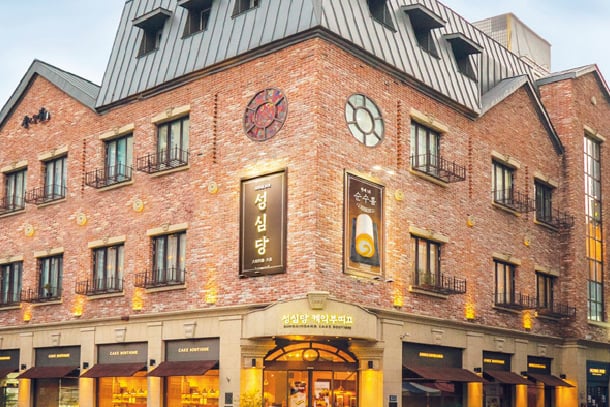
Since its humble beginnings as a small stall in front of Daejeon Station in 1956, Sungsimdang has become the most famous bakery in Daejeon. It offers hundreds of items, including its two bestsellers, the Deep-fried Korean Streusel Bun and Chive Bun. The main store commands crowds of visitors no matter the weather or the time of the day. Recently, Sungsimdang has begun showcasing interesting merch through the Sungsimdang Culture Space.
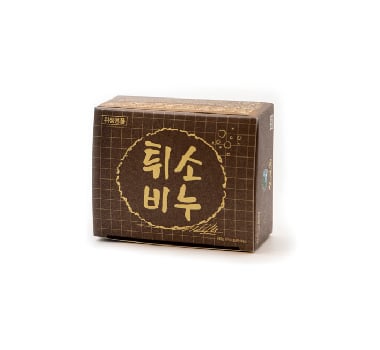 |
SUNGSIMDANG TWISO SOAP
This upcycled product is made with oil that was used to deep-fry Sungsimdang’s iconic Deep-fried Korean Streusel Bun. The soap actually takes after its namesake with its yellow packaging, the streusel-like crust, and even the red bean paste in the bread. That is not to say that the soap is all show and no go.
|
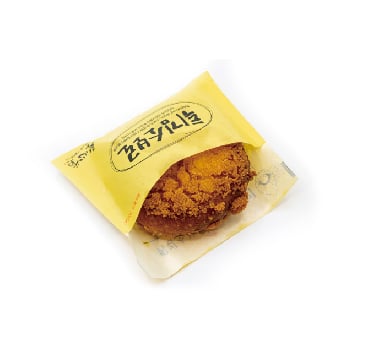 |
SUNGSIMDANG DEEP-FRIED KOREAN STREUSEL
This is one of the most recognizable bestsellers among Korean bread: A grand total of 88,296,214 buns were sold from 1980 to 2022. The bread is made with flour, red beans, butter, almonds, and eggs. Red beans are made into a sweet red bean paste by hand, and the streusel bun is filled with the paste before being deep-fried on the spot.
|
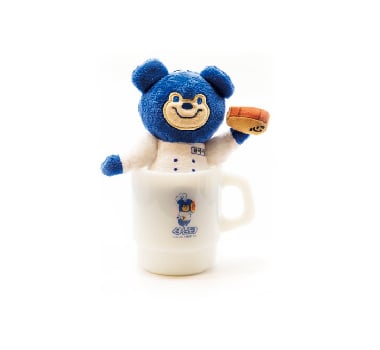 |
SUNGSIMDANG RETRO GLASS CUP
This glass cup is perfect for serving milk or juice. It features the characteristically strong design sensibilities of Sungsimdang, which can be found consistently across its books, packaging, and merch.
|
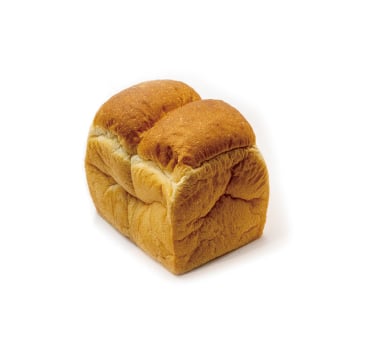 |
SUNGSIMDANG MOCHI MOCHI BREAD
This bread is made with the finest flour using the water roux technique. Despite not featuring any sweet rice in the dough, the bread is named after the sweet rice cake (mochi) because of its springy texture. Hand-shred the bread and dig in, and see why the fans of bread in Korea recognize it as the best of the best.
|
Q Sungsimdang always has huge lines, so I can’t muster up enough courage to get in there. Who can I ask for information in the building? There’s no need to worry about crowds. Just ask our staff members, and staff members who speak English, Chinese, and Japanese will be with you shortly.
Q Are there any desserts with a Korean feel? There’s a store called “Yenmatsomssi” in front of the main branch. It sells traditional sweets like yakgwa (honey cookies), sikhye (sweet rice punch), and manju, all made by Sungsimdang.
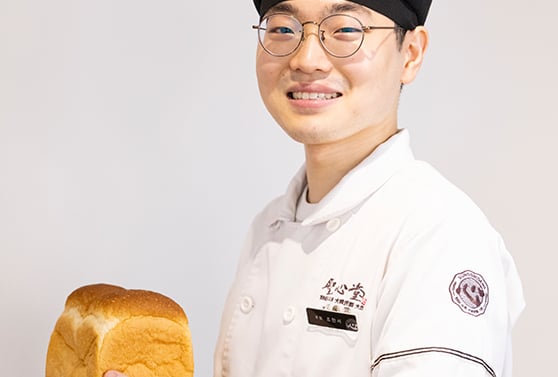

Daejeon’s Yuseong pear, also known as hot springs pear, is famous for its deep sweetness and crunchy texture. In addition to its flagship singo cultivar, Korean golden pear, hosui, mansamgil, jangsimnang, and other cultivars are released from mid-September to late October. Pear tea is an original tea blend made from Yuseong pear with cinnamon, ginger, tangerine peel, and others by K. Herb Co. It's not sold anywhere else.
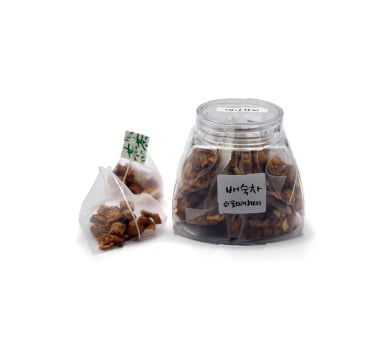 |
K. HERB CO. PEAR TEA
The name of this tea brings baesuk (pear punch), a traditional beverage, to mind, but the tea is actually quite different. For instance, pear tea is best enjoyed warm in the winter. It can be drunk by everyone, regardless of their constitution. Steep in hot water for at least three minutes to get the right flavor and subtle color. Because it comes in a teabag form, it is perfect for trips as well.
|
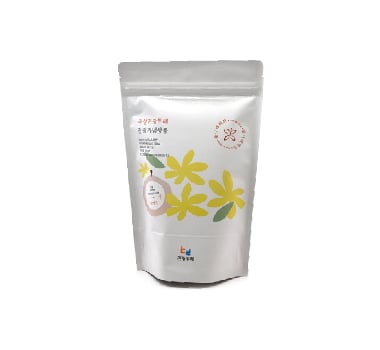 |
K. HERB CO. DALBITCHA
This fragrant tea blends Korean black tea, Yuseong pear, marigold, and natural vanilla essential oil. Marigold is known to contain substances that are beneficial for skin care and circulation. Korean black tea’s characteristically smooth flavor and bold body go perfectly with Yuseong pear’s freshness. The tea also shows excellent balance when drunk cold.
|
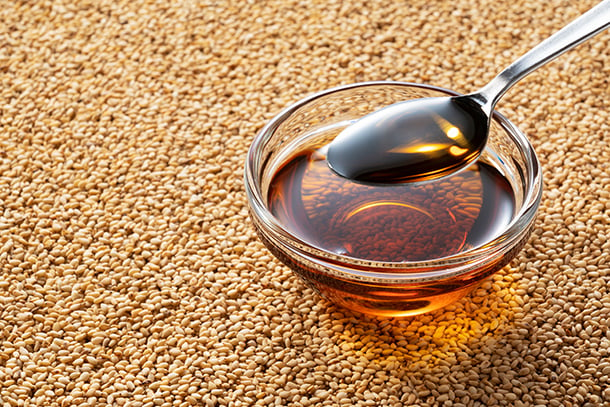
Umyeong-dong Sesame Oil Village makes sesame products from sesame grown by villagers, using advanced facilities and exacting hygiene standards. It uses 100% Korean ingredients. Because of that, its products bring the healthy and savory flavors of nature to the fore. Pressed from toasted sesame seeds, sesame oil is rich in lignans that prevent rancidity.
 |
SESAME OIL
Sesame oil is a must-have ingredient for Korean cuisine. Umyeong-dong Sesame Oil has a savory flavor that is long-lasting in both palate and storage. A good bottle of sesame oil can be used in a wide range of dishes, from bibimbap to salad and pasta. The oil itself comes in a sturdy bottle and is perfectly sized for gifting.
|
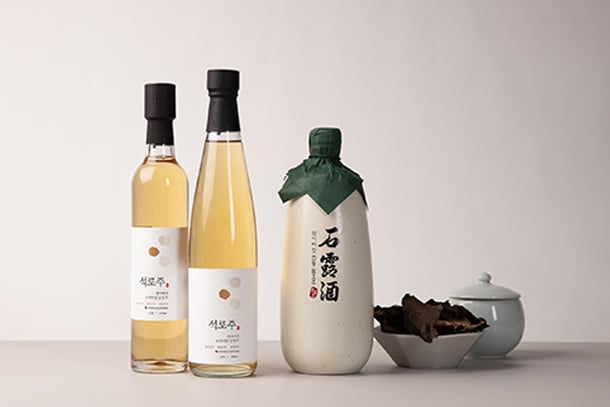
Traditional Korean liquor made in Daejeon tends to be youthful and hip not only in their labels and bottle design but also in experiments based on traditional brewing techniques. This liquor can be found in restaurants and bottle shops across the Daejeon city center, as well as department stores and large supermarkets. Among them, liquor that has been pasteurized makes for the safest souvenirs and gifts. For unpasteurized liquor, you need to make sure that they are stored properly.
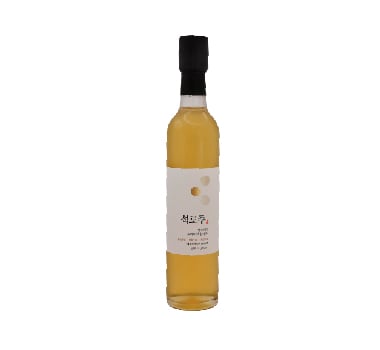 |
SEONGNOJU
This medicinal herb liquor, with an ABV of 13%, is made by Seokiwon Brewery. It has a gentle flavor with a luxurious fragrance of manna lichen. Manna lichen and sweet rice form the basis of this liquor, upon which water boiled down with Northern bamboo and 25 other medicinal herbs is added. Manna lichen is a type of mushroom that grows on rocks deep in mountains. It is said to mitigate the damages from various lifestyle diseases. Seongnoju goes very well with seafood.
|
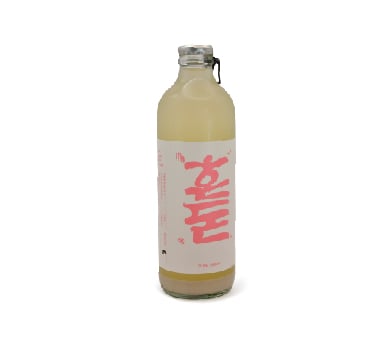 |
HONDON
This takju (unrefined rice wine) is brewed by the Crab & Sparrow Brewery. It is a danyangju (single-step unrefined rice wine) made with sweet rice, characterized by light acidity and fruity notes. It goes well with pizza and salad.
|
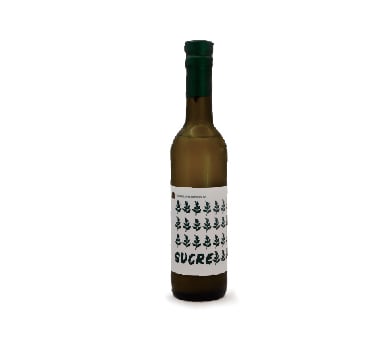 |
SUCRE
This takju (unrefined rice wine) with 18% ABV is made by Jubangjang Brewery Co. It is one of the very rare selections of traditional Korean liquor that make use of mugwort. To bring the fragrance of mugwort to life, Jubangjang Brewery Co. used methods adopted from teamaking traditions. Sucre is brewed in a brewery located in Yuseong using sweet rice from Noeun in Chungju. Suggested pairings include mugwort rice cake, pancakes, and boiled pork slices.
|
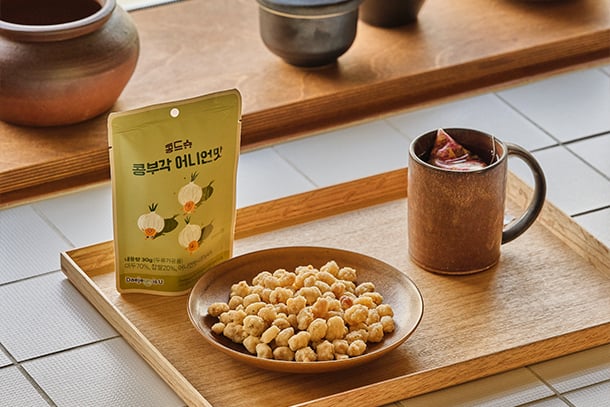
Korea is said to be one of the potential origins of soybeans, and because of that, Koreans have developed dishes that utilize them. Beans are rich in protein and low in sugar compared to other grains, so they make for very healthy food. Bugak refers to chips made by coating seaweed or vegetables with sweet rice paste, drying them, and then deep-frying. It can be used as toppings for salads and yogurt.
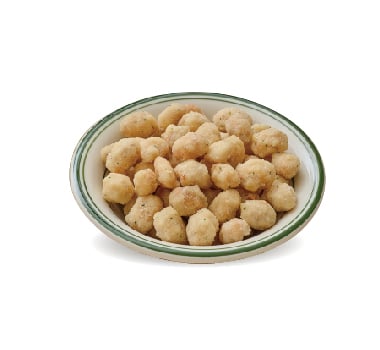 |
SOYBEAN KONGBUGAK
This product gives a plain flavor of soybean itself. It can be adopted for use in a variety of dishes. Soybeans are known as baektaekong or mejukong in Korean. They are used to make bean curd or cold soybean soup. When fermented into meju (blocks of fermented soybean), it serves as the basis for soybean paste, soy sauce, and red chili paste.
|
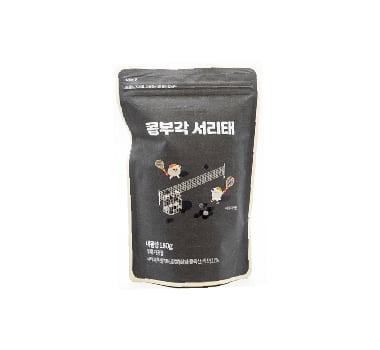 |
BLACK SOYBEAN KONGBUGAK
Black soybeans impart this dish with richness and gentle sweetness, as well as a luxurious shade of black. When used as a topping for noodles in cold soybean soup, its richness intensifies. Black soybeans are one of the most widely used black beans in Korea. Its dark pigment is rich in antioxidants, which help to remove reactive oxygen species, promote circulation, and build immunity.
|
 |
SPICY CHEESE KONGBUGAK
The addition of a spicy cheese seasoning makes it a perfect accompaniment to alcoholic beverages, particularly beer and white wine. It also goes well with sweet beverages like cider and refreshing mixed drinks like highballs.
|
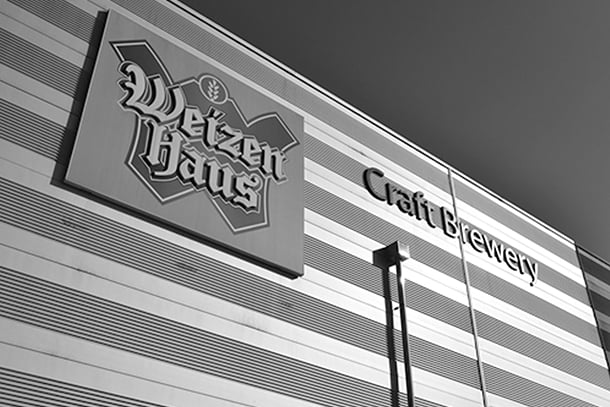
Daejeon offers a wide variety of craft beers, but few are available in bottles. Yuseong Golden Ale was created in conjunction with Weizenhaus as the symbol of Yuseong. This golden, 100% all-malt (barley) ale has a rich flavor with a refreshing finish. More than 20,000 bottles of Yuseong Golden Ale have been sold already, including in Yuseong's famous festivals.
 |
YUSEONG GOLDEN ALE
This golden ale is perfect for summer heat. Golden ale is a type of English pale ale created as a response to the mass-produced American adjunct lager in the late 20th Century. Golden ale denotes brews that make use of English hops, while brews that use Belgian hops are known as blond ale. Yuseong Golden Ale has an ABV of 4.5% with a refreshing palate that does not feel heavy. The red label has a picture of the Yuseong EXPO Hanbit Tower on it.
|
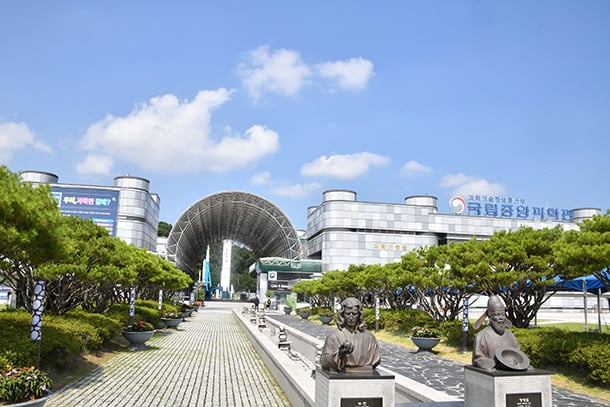
There are five National Science Museums around Korea. The largest of them is the National Science Museum in Daejeon. It includes the Science and Technology Hall, Special Exhibition Hall, Natural History Hall, and the Science & Engineering Workstation. A souvenir shop can be found in a separate building. DIY Kits make for inspiring gifts for budding scientists and interesting ornaments for one’s house.
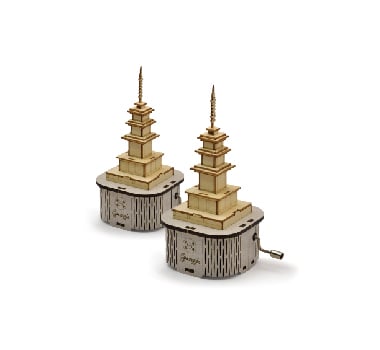 |
NATIONAL SCIENCE MUSEUM HAND CRANK GYEONGJU SEOKGATAP PAGODA MUSIC BOX
This assembly kit is patterned after National Treasure No. 21 of Korea, Seokgatap Pagoda (Three-story Stone Pagoda of Bulguksa Temple, Gyeongju). It is quite easy to assemble, and once completed, one can turn the hand crank to play the folk song “Arirang.” Because the kits themselves are light and packaged in thin sheets, multiple kits can fit into one’s luggage.
|
 |
NATIONAL SCIENCE MUSEUM HAPPYPAPER ANIMAL CRAFT KIT
These paper kits allow you to make a variety of animal puppets, including a Scottish fold cat, red panda, Shiba Inu, and more. Paper crafts are eco-friendly as they can be dismantled, re-assembled, or recycled.
|
Sutonggol Valley is a part of Gyeryongsan National Park. It is, however, easily reachable from downtown Daejeon. In fact, it takes less than 30 min from Daejeon Station via taxi. The trail is gentle and flat, so much so that one does not need to pack hiking shoes. Sutonggol Valley Course 1, which takes you along a 3.2km-long path connecting Sutonggol Parking Lot to Sutongpokpo Falls, Hwasangyegok Valley, Geumsubong Samgeori, and Geumsubong Peak, takes about 2 h and 30 min to complete.

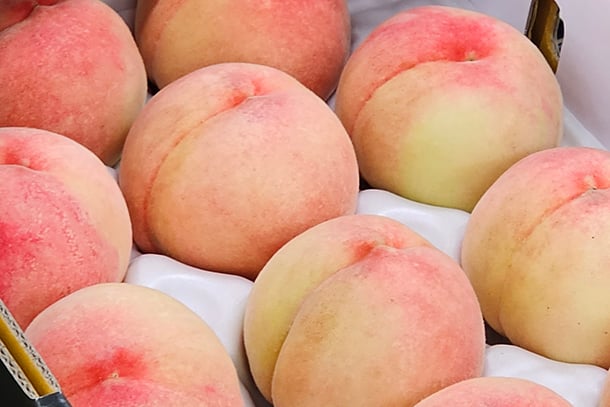
The area around Jochiwon is known to be a prime site for peach farming, thanks to its sandy soil offering excellent drainage. As such, Jochiwon peach has quite a reputation, dating back more than a century. In summer, when peaches are sent out to the market, Jochiwon hosts the Jochiwon Peach Festival. Outside of peach season, you can buy a variety of products made with peaches, including bread, drinks, and jams.
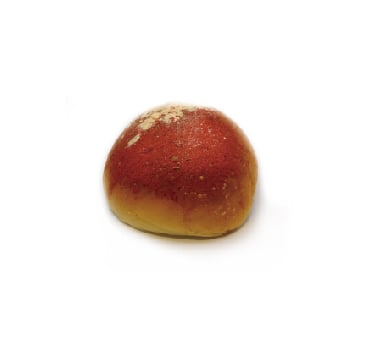 |
GRAND BAKERY PEACH BREAD
This bread resembles a juicy and plump peach. The fluffy bread, dusted with strawberry powder and powdered soybean, is filled with light cream and peach fruit. Don’t forget to take a picture before you dig in.
|
 |
A JEWEL ON A DINING TABLE, PEACH JAM
This peach jam is made by a cooperative of peach farmers in Sejong. It uses no preservatives and only uses peach, sugar, and lemon juice. Because of that, once the lid is opened, the room fills with the fragrance of peaches.
|
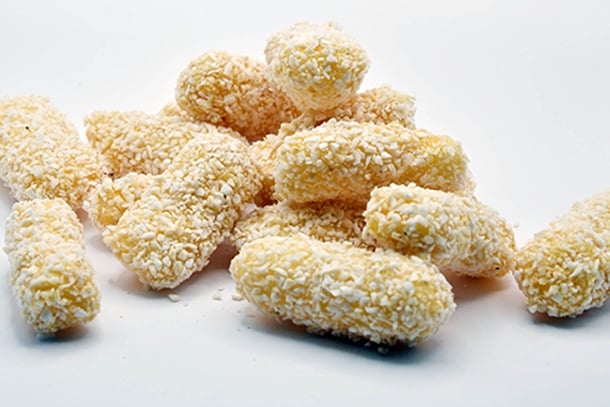
Hangwa refers to traditional Korean sweets. In the past, it was a mainstay of refreshment and banquet tables, particularly for birthdays, weddings, and other special occasions. Sejong Hangwa is handmade by Kim Gyuheun, a master craftsman designated by the state. It features a gentle hue and the fragrance of turmeric.
 |
Sejong Turmeric Hangwa
Ingredients used to make this hangwa, such as sweet rice, malt syrup, and turmeric, are all sourced from Korea. In fact, the producer grows the ingredients himself, so the end product is even more valuable. It is sweet without being overpowering and has a crispy yet chewy texture. Several studies have demonstrated that turmeric helps protect the liver and suppress liver toxicity. It has earned much attention as a healthy food for its many benefits, including reducing cholesterol, improving digestion, relieving hangovers, and preventing obesity.
|
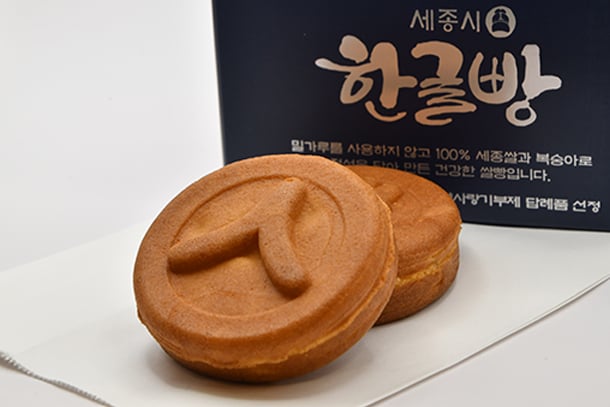
This is the most well-known of all bread products in Sejong. It was developed by Seo Yeong-seok, a photographer in the region, as a unique way to promote the city of Sejong to the general public. The front of the bread has the Korean consonants (ㅅ•ㅈ•ㅇ) and vowels (ㅔ•ㅗ) that make up the name of the city, while the back of the bread is adorned with 2012, the year of Sejong’s establishment. The bread is made with rice produced in Sejong, and the inside is filled with peaches, red beans, cheddar cheese, and custard cream. Five pieces of the bread in total are required to make the name of the city “Sejong” for one’s social media account.
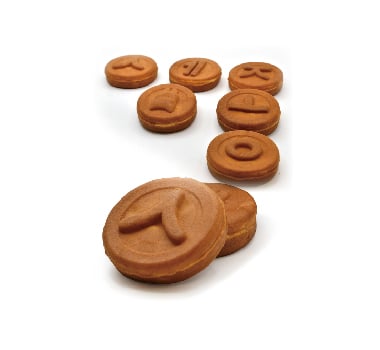 |
HANGEUL BREAD
Flavors include cheddar, mozzarella cheese, custard cream, and sweet red bean. Just like the bungeoppang (fish-shaped bun), adults tend to go for sweet red bean filling, while custard cream is popular among children. It's gluten-free and made with 100% rice flour and no wheat, so it's perfect for those with allergies or those who need to watch their blood sugar levels.
|
Sejong National Arboretum is the third national arboretum and the first urban arboretum in Korea. The arboretum complex, which is the size of 90 soccer fields (65ha), has 20 different thematic exhibition centers, including the largest four-season greenhouse in Korea, and 1.61 million plants of 2,453 species. The massive glass structure that symbolizes this arboretum houses the four-season greenhouse. Here, you can learn about the importance of plant species diversity through exhibits and education on Mediterranean and tropical plants. The exterior of the building is inspired by the petals of the monocotyledonous plant iris. Other attractions include the Traditional Korean Garden and the Bonsai Garden.
